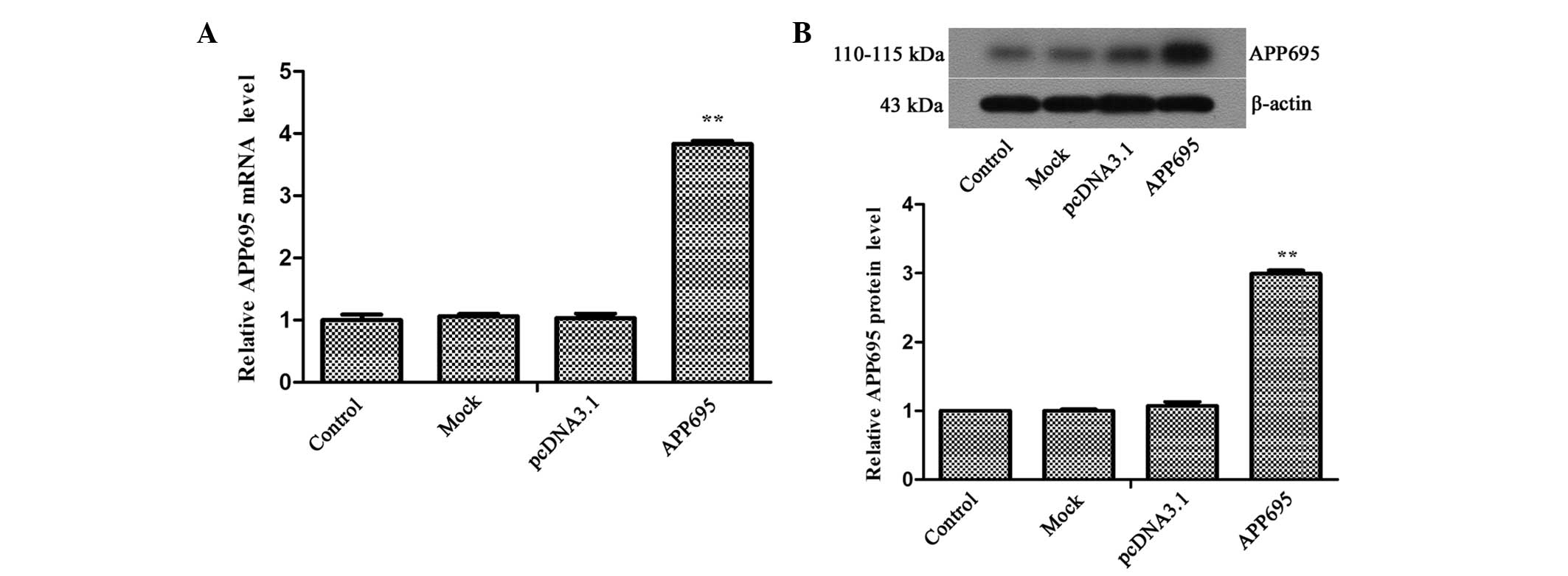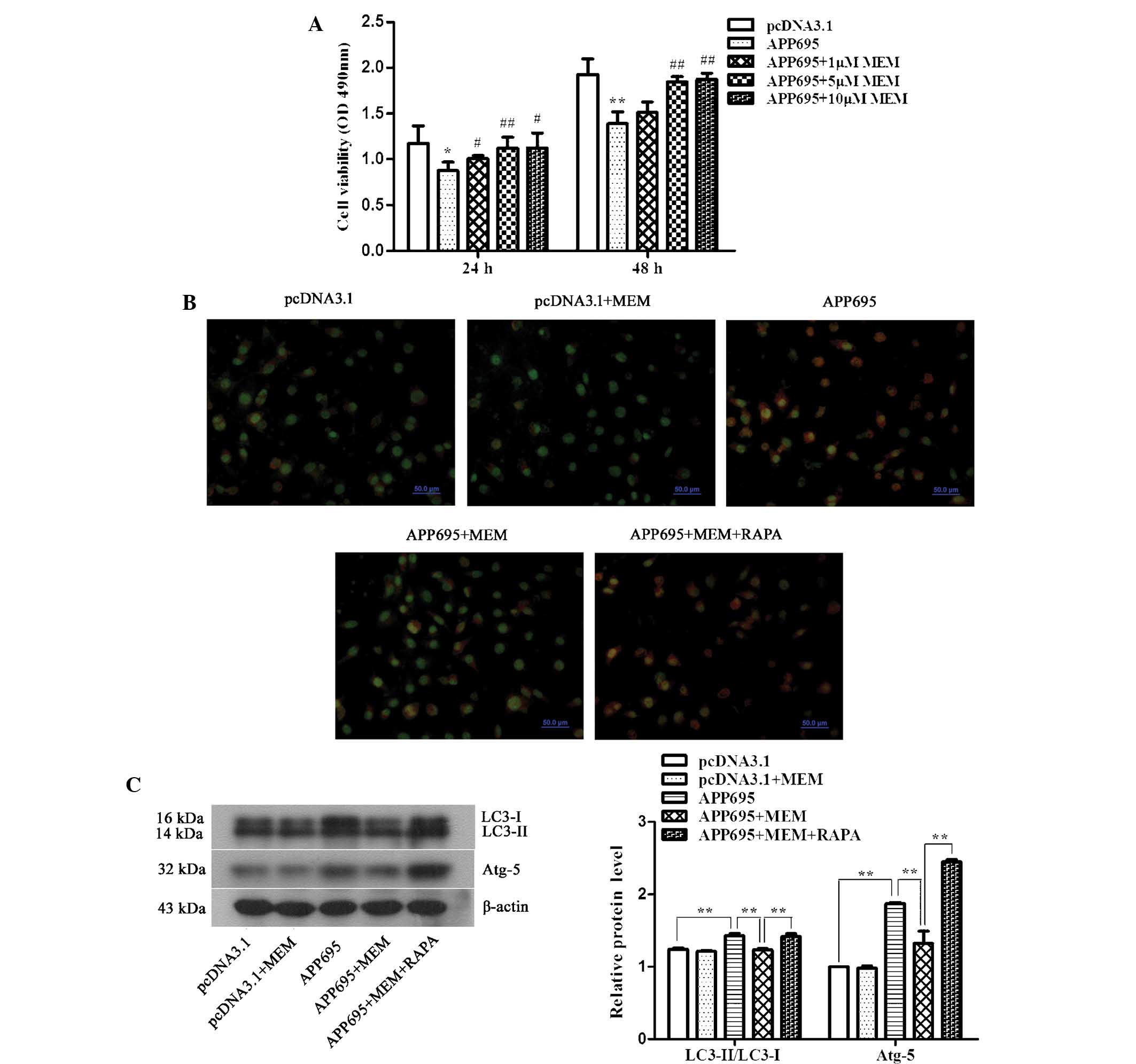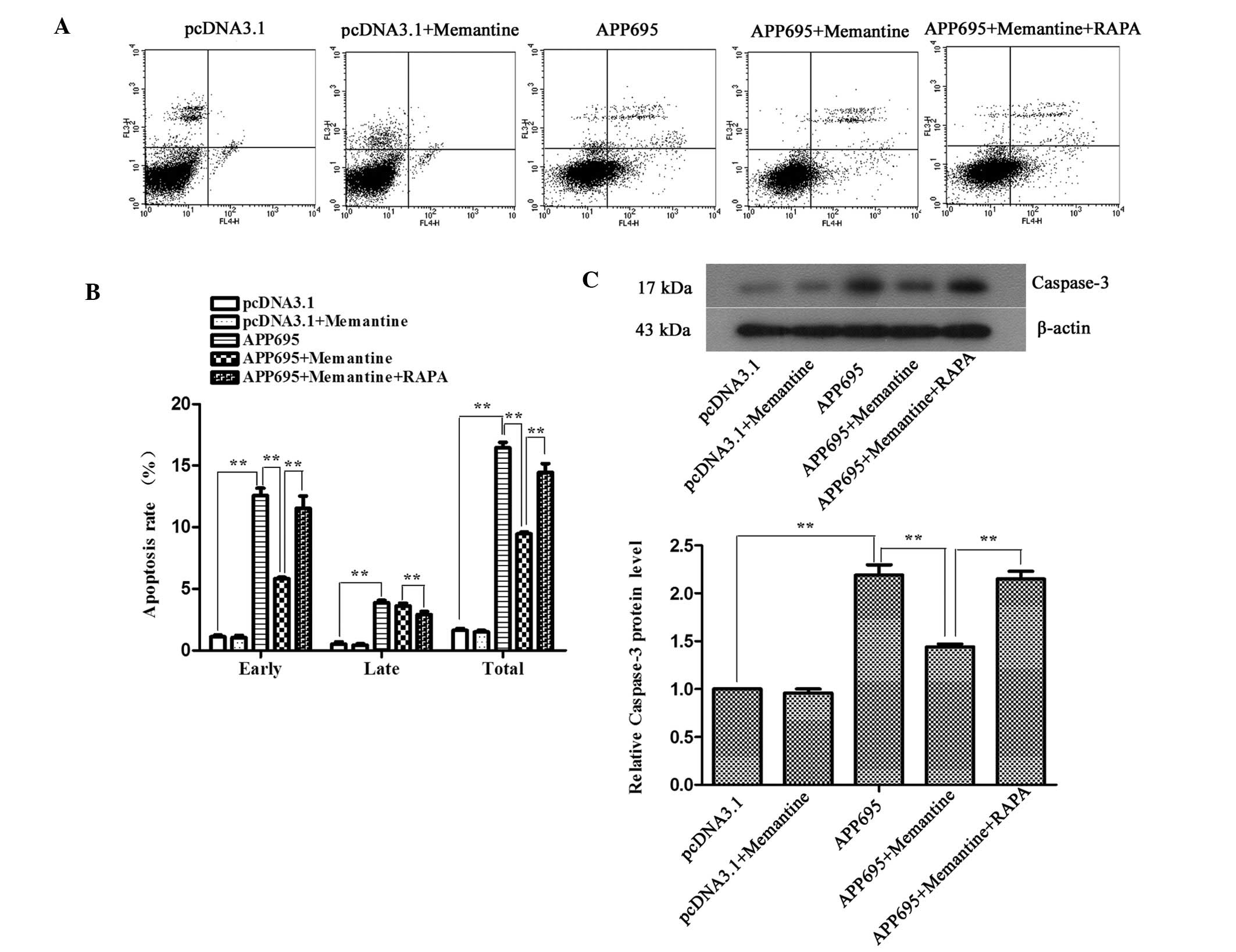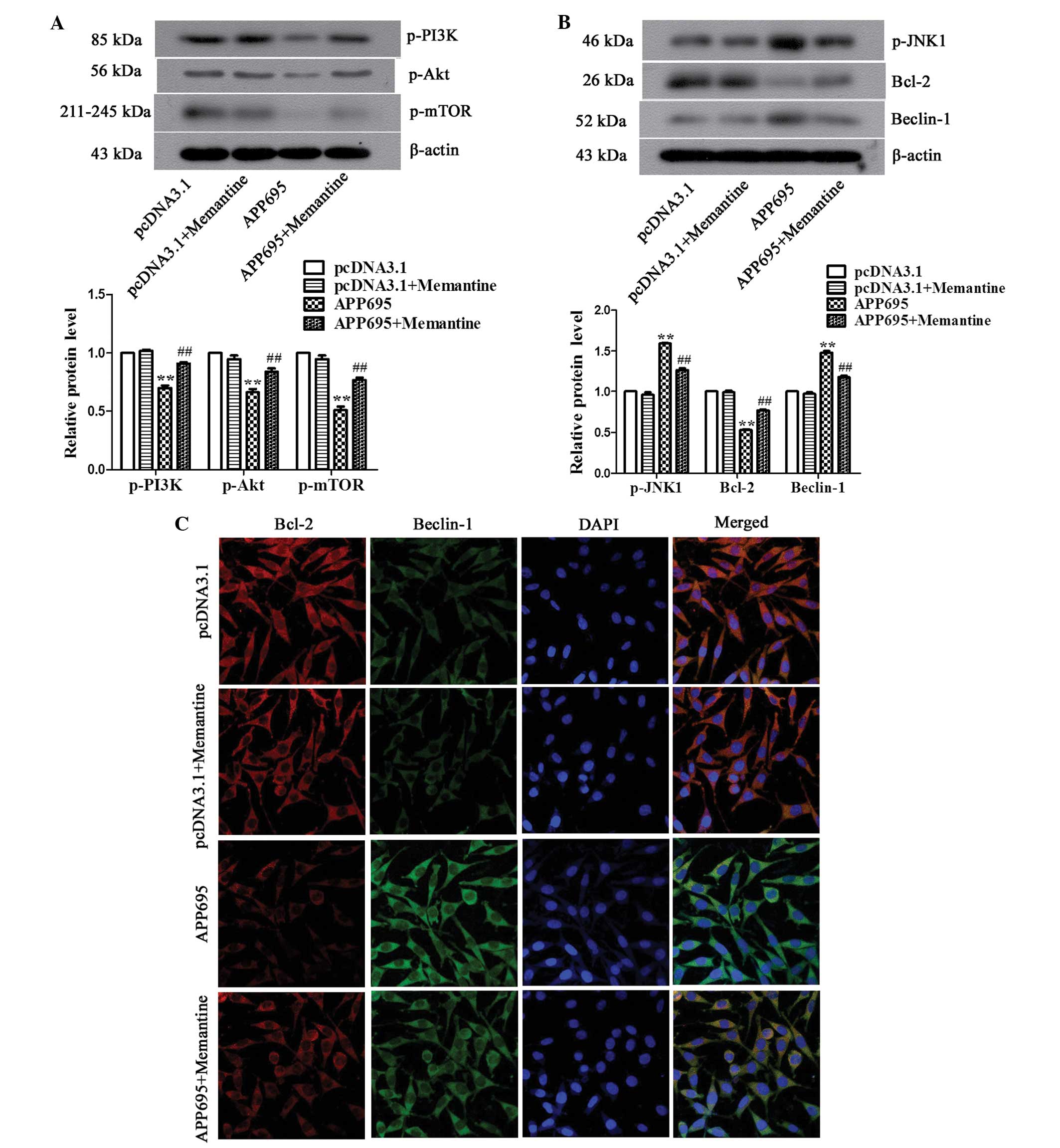|
1
|
Ballard C, Gauthier S, Corbett A, Brayne
C, Aarsland D and Jones E: Alzheimer's disease. Lancet.
377:1019–1031. 2011. View Article : Google Scholar : PubMed/NCBI
|
|
2
|
Huang Y and Mucke L: Alzheimer mechanisms
and therapeutic strategies. Cell. 148:1204–1222. 2012. View Article : Google Scholar : PubMed/NCBI
|
|
3
|
De Felice FG, Velasco PT, Lambert MP,
Viola K, Fernandez SJ, Ferreira ST and Klein WL: Abeta oligomers
induce neuronal oxidative stress through an N- methyl-d- aspartate receptor- dependent
mechanism that is blocked by the Alzheimer drug memantine. J Biol
Chem. 282:11590–11601. 2007. View Article : Google Scholar : PubMed/NCBI
|
|
4
|
Texidó L, Martín-Satué M, Alberdi E,
Solsona C and Matute C: Amyloid β peptide oligomers directly
activate NMDA receptors. Cell Calcium. 49:184–190. 2011. View Article : Google Scholar
|
|
5
|
Zheng L, Kågedal K, Dehvari N, Benedikz E,
Cowburn R, Marcusson J and Terman A: Oxidative stress induces
macroautophagy of amyloid beta- protein and ensuing apoptosis. Free
Radic Biol Med. 46:422–429. 2009. View Article : Google Scholar
|
|
6
|
Lorenzi M, Beltramello A, Mercuri NB,
Mercuri NB, Canu E, Zoccatelli G, Pizzini FB, Alessandrini F,
Cotelli M and Rosini S: Effect of memantine on resting state
default mode network activity in Alzheimer's disease. Drugs Aging.
28:205–217. 2011. View Article : Google Scholar : PubMed/NCBI
|
|
7
|
Saxton J, Hofbauer RK, Woodward M,
Gilchrist NL, Potocnik F, Hsu HA, Miller ML, Pejović V, Graham SM
and Perhach JL: Memantine and functional communication in
Alzheimer's disease: Results of a 12- week, international,
randomized clinical trial. J Alzheimers Dis. 28:109–118. 2012.
|
|
8
|
Schulz JB, Rainer M, Klünemann HH, Kurz A,
Wolf S, Sternberg K and Tennigkeit F: Sustained effects of once -
daily memantine treatment on cognition and functional communication
skills in patients with moderate to severe Alzheimer's disease:
Results of a 16- week open- label trial. J Alzheimers Dis.
25:463–475. 2011.
|
|
9
|
Liu MY, Wang S, Yao WF, Zhang ZJ, Zhong X,
Sha L, He M, Zheng ZH and Wei MJ: Memantine improves spatial
learning and memory impairments by regulating NGF signaling in
APP/PS1 transgenic mice. Neuroscience. 273:141–151. 2014.
View Article : Google Scholar : PubMed/NCBI
|
|
10
|
Danysz W and Parsons CG: The NMDA receptor
antagonist memantine as a symptomatological and neuroprotective
treatment for Alzheimer's disease: Preclinical evidence. Int J
Geriatr Psychiatry (Suppl 1). 18:S23–S32. 2003. View Article : Google Scholar
|
|
11
|
Peskind ER, Potkin SG, Pomara N, Ott BR,
Graham SM, Olin JT and McDonald S: Memantine treatment in mild to
moderate Alzheimer disease: A 24- week randomized, controlled
trial. Am J Geriatr Psychiatry. 14:704–715. 2006. View Article : Google Scholar : PubMed/NCBI
|
|
12
|
Ray B, Banerjee PK, Greig NH and Lahiri
DK: Memantine treatment decreases levels of secreted Alzheimer's
amyloid precursor protein (APP) and amyloid beta (A beta) peptide
in the human neuroblastoma cells. Neurosci Lett. 470:1–5. 2010.
View Article : Google Scholar
|
|
13
|
Alley GM, Bailey JA, Chen D, Ray B, Puli
LK, Tanila H, Banerjee PK and Lahiri DK: Memantine lowers amyloid-
beta peptide levels in neuronal cultures and in APP/PS1 transgenic
mice. J Neurosci Res. 88:143–154. 2010. View Article : Google Scholar
|
|
14
|
Maekawa M, Namba T, Suzuki E, Yuasa S,
Kohsaka S and Uchino S: NMDA receptor antagonist memantine promotes
cell proliferation and production of mature granule neurons in the
adult hippocampus. Neurosci Res. 63:259–266. 2009. View Article : Google Scholar : PubMed/NCBI
|
|
15
|
Namba T, Maekawa M, Yuasa S, Kohsaka S and
Uchino S: The Alzheimer's disease drug memantine increases the
number of radial glia-like progenitor cells in adult hippocampus.
Glia. 57:1082–1090. 2009. View Article : Google Scholar
|
|
16
|
Namba T, Yabe T, Gonda Y, et al: Pigment
epithelium-derived factor upregulation induced by memantine, an
N-methyl-d-aspartate receptor antagonist, is involved in increased
proliferation of hippocampal progenitor cells. Neuroscience.
167:372–383. 2010. View Article : Google Scholar : PubMed/NCBI
|
|
17
|
Ghavami S, Shojaei S, Yeganeh B, Ande SR,
Jangamreddy JR, Mehrpour M, Christoffersson J, Chaabane W, Moghadam
AR and Kashani HH: Autophagy and apoptosis dysfunction in
neuro-degenerative disorders. Prog Neurobiol. 112:24–49. 2014.
View Article : Google Scholar
|
|
18
|
Nixon RA: Autophagy, amyloidogenesis and
Alzheimer disease. J Cell Sci. 120:4081–4091. 2007. View Article : Google Scholar : PubMed/NCBI
|
|
19
|
Nilsson P, Loganathan K, Sekiguchi M,
Matsuba Y, Hui K, Tsubuki S, Tanaka M, Iwata N, Saito T and Saido
TC: Aβ secretion and plaque formation depend on autophagy. Cell
Reports. 5:61–69. 2013. View Article : Google Scholar
|
|
20
|
Yu WH, Cuervo AM, Kumar A, Peterhoff CM,
Schmidt SD, Lee JH, Mohan PS, Mercken M, Farmery MR and Tjernberg
LO: Macroautophagy– a novel Beta- amyloid peptide- generating
pathway activated in Alzheimer's disease. J Cell Biol. 171:87–98.
2005. View Article : Google Scholar : PubMed/NCBI
|
|
21
|
Spilman P, Podlutskaya N, Hart MJ, Debnath
J, Gorostiza O, Bredesen D, Richardson A, Strong R and Galvan V:
Inhibition of mTOR by rapamycin abolishes cognitive deficits and
reduces amyloid- beta levels in a mouse model of Alzheimer's
disease. PLoS One. 5:e99792010. View Article : Google Scholar
|
|
22
|
Caccamo A, Majumder S, Richardson A,
Strong R and Oddo S: Molecular interplay between mammalian target
of rapamycin (mTOR), amyloid- beta, and Tau: Effects on cognitive
impairments. J Biol Chem. 285:13107–13120. 2010. View Article : Google Scholar : PubMed/NCBI
|
|
23
|
Tan CC, Yu JT, Tan MS, Jiang T, Zhu XC and
Tan L: Autophagy in aging and neurodegenerative diseases:
Implications for pathogenesis and therapy. Neurobiol Aging.
35:941–957. 2014. View Article : Google Scholar
|
|
24
|
Zhu XC, Yu JT, Jiang T and Tan L:
Autophagy modulation for Alzheimer's disease therapy. Mol
Neurobiol. 48. pp. 702–714. 2013, View Article : Google Scholar
|
|
25
|
Ye X, Tai W, Bao X, Chen X and Zhang D:
FLZ inhibited γ- secretase selectively and decreased Aβ
mitochondrial production in APP- SH- SY5Y cells. Naunyn
Schmiedebergs Arch Pharmacol. 387:75–85. 2014. View Article : Google Scholar
|
|
26
|
Shen YE, Wang Y, Yu GC, Liu C, Zhang ZY
and Zhang LM: Effects of edaravone on amyloid-β precursor protein
processing in SY5Y- APP695 cells. Neurotox Res. 24:139–147. 2013.
View Article : Google Scholar : PubMed/NCBI
|
|
27
|
Wang L, Zhang D, Yu Y, Guan H, Qiao C and
Shang T: RNA interference- mediated silencing of laminin receptor 1
(LR1) suppresses migration and invasion and downregulates matrix
metalloproteinase (MMP)- 2 and MMP- 9 in trophoblast cells:
Implication in the pathogenesis of preeclampsia. J Mol Histol.
44:661–668. 2013. View Article : Google Scholar : PubMed/NCBI
|
|
28
|
Nixon RA, Wegiel J, Kumar A, Yu WH,
Peterhoff C, Cataldo A and Cuervo AM: Extensive involvement of
autophagy in Alzheimer disease: An immunoelectron microscopy study.
J Neuropathol Exp Neurol. 64:113–122. 2005.PubMed/NCBI
|
|
29
|
Louneva N, Cohen JW, Han LY, albot K,
Wilson RS, Bennett DA, Trojanowski JQ and Arnold SE: Caspase- 3 is
enriched in post-synaptic densities and increased in Alzheimer's
disease. Am J Pathol. 173:1488–1495. 2008. View Article : Google Scholar : PubMed/NCBI
|
|
30
|
Kaufman AM, Milnerwood AJ, Sepers MD,
Coquinco A, She K, Wang L, Lee H, Craig AM, Cynader M and Raymond
LA: Opposing roles of synaptic and extrasynaptic NMDA receptor
signaling in cocultured striatal and cortical neurons. J Neurosci.
32:3992–4003. 2012. View Article : Google Scholar : PubMed/NCBI
|
|
31
|
Caballero B and Coto- Montes A: An insight
into the role of autophagy in cell responses in the aging and
neurodegenerative brain. Histol Histopathol. 27:263–275.
2012.PubMed/NCBI
|
|
32
|
Gao X, Xu X, Pang J, Zhang C, Ding JM,
Peng X, Liu Y and Cao JM: NMDA receptor activation induces
mitochondrial dysfunction, oxidative stress and apoptosis in
cultured neonatal rat cardiomyocytes. Physiol Res. 56:559–569.
2007.
|
|
33
|
Han W, Pan H, Chen Y, Sun J, Wang Y, Li J,
Ge W, Feng L, Lin X, Wang X, et al: EGFR tyrosine kinase inhibitors
activate autophagy as a cytoprotective response in human lung
cancer cells. PLoS One. 6:e186912011. View Article : Google Scholar : PubMed/NCBI
|
|
34
|
Liu J, Hu XJ, Jin B, Qu XJ, Hou KZ and Liu
YP: β- Elemene induces apoptosis as well as protective autophagy in
human non- small- cell lung cancer A549 cells. J Pharm Pharmacol.
64:146–153. 2012. View Article : Google Scholar
|
|
35
|
Wang P, Guo QS, Wang ZW and Qian HX: HBx
induces HepG- 2 cells autophagy through PI3K/Akt- mTOR pathway. Mol
Cell Biochem. 372:161–168. 2013. View Article : Google Scholar
|
|
36
|
Yang YH, Chen K, Li B, Chen JW, Zheng XF,
Wang YR, Jiang SD and Jiang LS: Estradiol inhibits osteoblast
apoptosis via promotion of autophagy through the ER- ERK- mTOR
pathway. Apoptosis. 18:1363–1375. 2013. View Article : Google Scholar : PubMed/NCBI
|
|
37
|
Russell RC, Tian Y, Yuan H, Park HW, Chang
YY, Kim J, Kim H, Neufeld TP, Dillin A and Guan KL: ULK1 induces
autophagy by phosphorylating Beclin- 1 and activating VPS34 lipid
kinase. Nat Cell Biol. 15:741–750. 2013. View Article : Google Scholar : PubMed/NCBI
|














